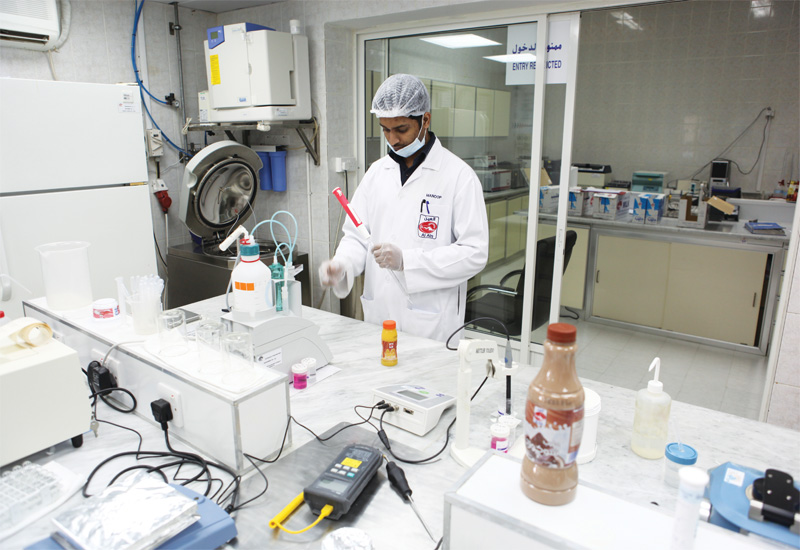Fortunes are looking up for the dairy industry and local and international suppliers, and the region’s chefs are making the most of it as Jamie Knights discovers
At the beginning of last month Saudi Arabian dairy and food producer Almarai Co posted an 8.7% year-on-year rise in its second quarter net profit.
While the fact the Gulf’s largest dairy firm made SR379.5m (US $101.2m) in the three months ending June 30, compared with SR349.3m ($93.1m) in the same period a year earlier, may not be gripping news for everyone, what is interesting is that the rise was due to increased sales in all sectors.

| Advertisement |
This revelation captures the wider growth picture for dairy products in the region and it is a sector that is experiencing innovation, new companies and a greater selection of options for chefs and outlets.
The UAE liquid milk market, for instance, is valued at a very healthy approximate of $297 million, while most analysts put the growth of the Middle East dairy sector at 10-15% year-on-year – an upward trend that is expected to continue in the medium term with inward migration, rising tourism figures and increasing population numbers, all under the umbrella of a growing demand for dairy.
The rest of the world has certainly taken notice, with many European, Australian, New Zealand and American dairy providers looking to get their piece of the Middle East dairy pie.
If you consider the two major dairy importing countries are Saudi Arabia, which imports about half of its domestic needs, and the UAE, which imports more than 90%, it’s little wonder dairy providers are taking notice.
But while this growth and interest is positive, there are a number of challenges it exacerbates and a few new ones it adds to the list.
Al Ain Dairy COO Shashi Menon knows all too well the demands of the ever-expanding sector, and the energy and drive it takes to succeed.
“There are many challenges and these include raising Holstein cows in unnatural temperatures; managing demand in summer season when milk yield is traditionally at its lowest; the fluctuation of costs including the high demand of water,” he explains.
And of course in a rapidly growing market there is the constant pressure of “meeting high demand”, while developing “new and diversified lifestyle products such as Benecol Milk and Slim 0 – low fat products”.
Supply is certainly a problem faced by Italian Dairy Products says GM Maria Luisa Panzica La Manna.
“Milk, which is the main raw material, is quite expensive and in the UAE there is a shortage. Companies like ours cannot use the milk coming from Saudi because it comes pasteurised at quite high temperatures. We need to buy raw milk and pasteurise ourselves – not higher than 72oC.”
Pritchitts sales manager Middle East, Paddy Darcy, argues that the dairy sector is becoming increasingly competitive with new products “entering the market from all corners of the globe”.
“The Middle East offers manufacturers a market that has been somewhat sheltered from the global economic downturn and they are taking advantage of this,” he says.
“In a competitive market set, price is always a major challenge to any manufacturer, whilst still providing quality dairy products that constantly perform at a high level.”
And not everyone is of the opinion that the dairy market in the region has reached a suitable level across the board. Chef and partner of Dubai-based Sweets, Cafe & Bakery, Pascal Clair, believes the price of dairy is still high and he sources the majority of his dairy from Europe.
“Only the milk is good in UAE,” he says. “We will definitely need a little longer before cream is produced in the UAE.”
Article continues on next page ...









 Search our database of more than 2,700 industry companies
Search our database of more than 2,700 industry companies









